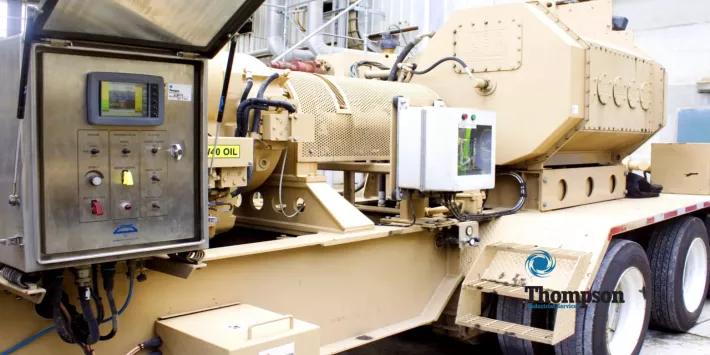What you need to know about High Volume Hydroblasting
BLOG
BIG PUMP
HIGH VOLUME HYDROBLASTING
HYDROBLASTING

Hydroblasting is a process that uses high pressured water to clean surfaces. High volume hydroblasting is a variation of the process that uses a high pressure water but with substantially increased flow rates than standard, conventional hydroblasting. This makes it ideal for larger scale projects where greater cleaning power and energy is needed.
If you're considering utilizing hydroblasting for your next project, here are some a few key elements you need to know about high volume hydroblasting.
What is Hydroblasting?
Hydroblasting is a process that incorporates high-pressure water to dislodge and remove unwanted deposits and fouling from a multitude of surfaces and bulk storage vessels. It is an ideal method for cleaning industrial equipment such as heat exchangers, boilers, reactors and tanks. The lower range of pressure and volume within this hydroblasting spectrum, often times used for cleaning buildings, vehicles and certain floor surfaces, is also known as pressure washing or power washing.
The high-pressure water used in hydroblasting can reach pressures of up to 40,000 psi (pounds per square inch). This pressure is created by a positive displacement (“plunger” type) hydroblasting machine, which discharges water through a hose to a specialized nozzle. The water exiting the nozzle strikes the surface to be cleaned with high energy forces to remove the build-up.
This water blasting cleaning technology removes unwanted fouling deposits that impair process equipment and production efficiency.
Custom Designed Equipment
Capable of cleaning applications where pressures of 10,000 to 40,000 psi are required, experienced personnel and proper pumps can get operating equipment back to full production and efficiency as quickly as possible. Custom-designed nozzles, tools and automated application equipment, combined with diesel-powered pumps, enable to provide unmatched speed, effectiveness, and safety.
What is High Volume Hydroblasting?
High Volume Hydroblasting, as its name describes, is a type of hydroblasting process that can deliver high-pressure in high volumes - this is done by using custom designed high volume pumps also known as "Big Pumps".
High volume pumps (to 2,250 HP, 1,200 GPM and 10,000 PSI each), coupled with talented personnel and automated equipment, can tackle the most demanding cleaning projects safely and efficiently to reduce costs and eliminate downtime.
What’s a Big Pump?
The general classification of big pump-capacity equipment is the true power behind the strategic ability of companies to service their clients with this unprecedented cleaning method. These sizable units (typically transported on their own tractor-trailer bed) are capable of pumping up to 1,200 gallons of water per minute, with a pressure of up to 10,000 PSI.
As you can imagine, these pumps, typically with output >30X conventional rigs, are more than adequate to clean incredibly quickly. In addition to traditional, relatively straightforward jobs, though, the use of high volume hydroblasting via Big Pumps is also a process to remedy problems with plant equipment that present extremely difficult challenges.
Big Pumps are routinely coupled with automated application equipment that can readily withstand and harness the extreme thrust (back-pressure) of the high volume water stream to clean nearly inaccessible locations of equipment. Also of benefit is that the high energy Big Pump hydroblasting operation can fluidize solid waste and convert it to a pumpable slurry, thus facilitating its waste -handling to minimize cost while accomplishing within the client’s time frame and budget.
Related Articles
Thompson Industrial: Your Chemical Cleaning Expert - When you need industrial cleaning services, there is no better option than Thompson Industrial Services.
Hydroblasting vs. Other Boiler Cleaning Techniques - Lets take a look at how hydroblasting compares from other boiler cleaning techniques.
